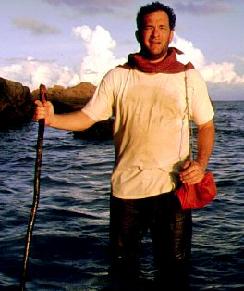Scene-32:50
This scene from Pulp Fiction initially starts off with a zoom as the car pulls up. The 2 characters in the car are primarily focused on which connotes to the audience that they are the main characters in this scene. The diagetic sound or dialogue accompanies this shot as it informs the audience of the characters’ whereabouts and why they are there. The lighting in the first minute and a half is mainly low key with red and gold lighting shining through from the background which emphasises on the time of day, which is in the evening, and the red and gold adds to the brightness of this particular shot and emphasises on the L.A lifestyle they are living, especially as they pull up outside a typical L.A style restaurant. The camera at this point cuts and pans across from the back of the car to the side displaying the characters getting out of car and walking towards the restaurant, resulting in a long shot signifying to the audience that the characters are entering a new environment displaying a different mise-en-scene. As this movement is occurring, non-diagetic sound is introduced as the music from the restaurant livens up, and brings a slightly new feel to the audience.
The lighting steadily changes from low key lighting to high key lighting as the 2 characters enter the restaurant and ask for their table. However, the first shot of the characters in the restaurant is a medium shot taken from a side angle. This emphasises on the closeness of the 2 characters, and their companionship especially as they are male and female. Whilst the camera continues to focus on the characters as they talk, their costumes and dress code signifies class, possibly middle class, as the man is wearing a black suit and the woman is also dressed fairly elegantly. This also outlines their lifestyles, in particular where they live, and the reputation they maintain. The camera also particularly focuses on the man as he consistently follows the woman; thus connoting the dominance of the woman as the man passively follows.
Another shot within this scene lasts 1 minute excluding any edits as the filming is taken in one shot. This particular shot emphasises on the observation of the restaurant by the male character, especially as it is new to him. However, even though the camera is following him and is not a point of view shot, it still encourages the audience to identify with him as it allows the audience to observe the restaurant with him. This shot therefore decreases the enigma created throughout the first part of this scene as this shot creates a sense of security from the mise-en-scene. Moreover, the lighting in this shot again remains high key as the brightness of the surroundings reveals the L.A vibe to the audience. At the same time, the lighting effectively accompanies the jazzy non-diagetic sound, again focusing and portraying the L.A lifestyle. Nonetheless, the atmosphere which the audience receives throughout this scene juxtaposes to the genre of the film as the audience do not witness anything violent or anything which could possibly illustrate the climax of the film or the major event of the film, which backs up the genre. Also, by the end of this mini tour of the restaurant and mise-en-scene, the music eventually dies down and stops, which creates an enigma as to what will happen next.
The following shots display continuous sharp cuts from the male character to the female character as they are seated opposite each other at table. These continuous cuts emphasise on the closeness of the characters which illustrates the irony as they hardly know each other. Furthermore, the dialogue between the 2 characters becomes increasingly short, sharp and snappier. This raises the tension in the scene as the pace of their speech quickens, however this juxtaposes to the slow subtle music in the background decreasing the tension and influencing the mood which is being created. More on, the close up shots as the camera cuts emphasises on the facial expressions of the characters, which are fairly calm and flowing as the characters facial expressions are similar. The effect this has on the audience again decreases the tension, which is also accompanied by the mise-en-scene and non diagetic sound, which is evidently parallel to the narrative of this particular scene. The shots when looking at the opposing character is taken as a point of view shot which encourages the audience to identify with the characters as if they are being spoken to.
Overall, throughout the 6 minutes of this scene, there is a mixture of shots emphasising on certain aspects such as facial expressions to the mise-en-scene. Furthermore, the sound and lighting is parallel to the narrative of the 6 minutes of this scene, decreasing the tension, however at the same time creating an enigma for the audience as they await the sudden climax associating with the genre of the film.



